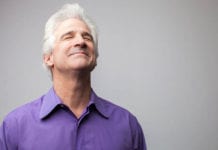When teenagers get lost or bored during a youth Bible study, that defeats the whole point. If the lesson seems to wander pointlessly from one topic to the next, kids are apt to become confused or completely check out. If you’re wondering how to write a Bible study that’s meaningful and keeps young people engaged and interested, you’ve come to the right place.
Learning how to write a Bible study and create lesson plans is a basic skill that some youth workers seem to lack. The skill is essential if you’re creating your own Bible studies for teens but even more critical when you’re evaluating resources to use with them. (After all, if you don’t know the basics, then how can you evaluate a resource?)
So I’ve put together this simple guide on how to write a Bible study.
Step 1: Study the Bible.
That may sound like an obvious starting point, but it’s key. For example, let’s say you’re going to teach on Mark 16:1-8. The point of first studying that passage is to help figure out the lessons for your group. When I do this, I list ideas as bullet points. Here are some of my comments from studying the passage:
- Doubt is a part of resurrection faith.
- The central question in the passage is “What happened to Jesus’ body?”
- The women are presented with an explanation: “Jesus is raised from the dead.”
- One could answer the central question in multiple ways.
- The point is that we need to answer the question for ourselves.
Step 2: Determine a learning objective.
Start the writing of the Bible study with clearly defined objectives. This gives you a goal to work toward with every aspect of the lesson. Without learning objectives, your time can be prone to wander. Now, this doesn’t mean you can’t go off script if an unexpected learning moment presents itself. Just try to maintain an overall focus and purpose from the beginning that holds the whole study together.
My two learning objectives for the Mark passage are:
- to understand that doubt is a part of faith, and
- to commit to a personal answer to the question “What happened to Jesus’ body?”













